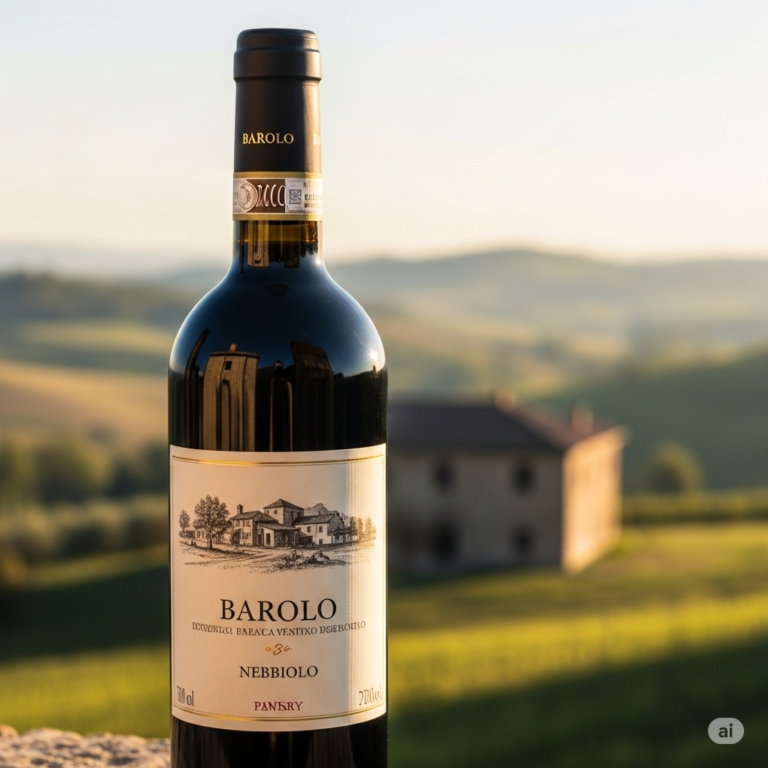In the world of fine wines, few names command the respect and admiration of connoisseurs like Barolo. Known as “The King of Italian Reds,” Barolo is a regal wine that hails from the rolling hills of Italy’s Piedmont region. Crafted exclusively from the Nebbiolo grape, Barolo is cherished for its complexity, aging potential, and deep connection to tradition. With a rich history, strict production rules, and a loyal global following, Barolo is more than a wine—it’s an expression of Italian heritage.
This article explores the origins, characteristics, production process, food pairings, and cultural significance of Barolo wine, offering insight into why it reigns supreme among Italian reds.
Origins and History of Barolo
The story of Barolo begins in the Langhe region of Piedmont, in northwestern Italy. This picturesque area is characterized by steep vineyards, medieval castles, and mist-covered valleys. The name “Barolo” itself comes from the town of Barolo, which, along with 11 other communes, is part of the designated Barolo DOCG (Denominazione di Origine Controllata e Garantita).
Barolo’s history dates back to the 19th century, when winemaking techniques began to modernize. Prior to that, Nebbiolo wines were often sweet or semi-sweet.
The Nebbiolo Grape: Soul of Barolo
Barolo is made entirely from the Nebbiolo grape, a variety known for its light color but powerful structure. The name “Nebbiolo” comes from the Italian word nebbia, meaning fog, which is common in the Langhe during the harvest season. This grape thrives in the limestone and clay-rich soils of Piedmont and requires a long growing season to reach full ripeness.
Nebbiolo is known for producing wines with:
-
High acidity
-
Firm tannins
-
Aromatic complexity
-
Great aging potential
These traits are perfectly expressed in Barolo, which reveals itself slowly over time, evolving with grace and depth.
Barolo Production and Aging Rules
To be labeled as a Barolo DOCG, a wine must follow strict production regulations:
-
It must be 100% Nebbiolo.
-
Grapes must come from one of the 11 approved communes, including Barolo, La Morra, Castiglione Falletto, Serralunga d’Alba, and Monforte d’Alba.
-
Minimum aging requirements:
-
38 months total, with at least 18 months in oak barrels
-
For Barolo Riserva, a minimum of 62 months aging is required
-
These rules ensure quality and authenticity, resulting in a wine that reflects its origin with precision and depth.
Taste Profile: A Journey of Flavors
Barolo is often described as a wine of paradoxes. It’s light in color, yet intensely aromatic and full-bodied. Young Barolo can be tight and tannic, but with age, it transforms into a silky, elegant wine with remarkable complexity.
Typical tasting notes include:
-
Aromas: Rose petals, dried cherry, tar, violets, truffle, licorice
-
Flavors: Ripe red fruits, earthy undertones, spices, leather, and sometimes tobacco or balsamic notes
-
Texture: Grippy tannins in youth, softening beautifully over time
-
Finish: Long, layered, and memorable
Barolo typically reaches its peak after 10–15 years, though some exceptional vintages can age for decades.
The Barolo Crus and Terroir
Just like Burgundy or Bordeaux, Barolo has its own classification of single-vineyard sites, known as crus or Menzioni Geografiche Aggiuntive (MGAs). These designate specific hillsides or plots known for producing distinctive expressions of Nebbiolo.
Some famous crus include:
-
Cannubi (Barolo): Elegant and floral
-
Brunate (La Morra and Barolo): Rich and velvety
-
Monprivato (Castiglione Falletto): Balanced and refined
-
Vigna Rionda (Serralunga d’Alba): Structured and powerful
These differences arise from microclimates, soil variations, and altitude, highlighting Barolo’s terroir-driven character.
Food Pairing with Barolo
Barolo’s strong tannins and acidity make it ideal for rich, hearty dishes. It pairs exceptionally well with Italian cuisine and rustic fare that can match its boldness.
Recommended pairings include:
-
Truffle-based dishes (Piedmont is famous for white truffles)
-
Braised meats, such as osso buco or short ribs
-
Aged cheeses, like Parmigiano-Reggiano or Castelmagno
-
Mushroom risotto
-
Game meats, such as venison or wild boar
Due to its power, Barolo is often best served with food rather than on its own. Decanting for 1–2 hours is also recommended to open up its aromas and soften tannins.
Barolo vs. Other Nebbiolo Wines
Barolo is not the only Nebbiolo-based wine in Piedmont, but it is the most prestigious. Others include:
-
Barbaresco: Also made from Nebbiolo, but lighter and more approachable in youth
-
Langhe Nebbiolo: An entry-level version, offering a glimpse into Nebbiolo at a lower price
While these wines share DNA with Barolo, none quite match its majesty, power, and prestige.
Investment and Collectibility
Because of its aging potential and historical significance, Barolo is highly sought after by collectors. Top producers like Giacomo Conterno, Bartolo Mascarello, Angelo Gaja, and Bruno Giacosa consistently produce wines that appreciate in value.
Barolo is also a popular investment wine, with certain vintages becoming collector’s items. Proper cellaring is essential, as the wine continues to evolve and improve over decades.
Sustainable and Modern Winemaking Trends
In recent years, a new generation of winemakers has emerged in Barolo, embracing:
-
Organic and biodynamic farming
-
Sustainable vineyard management
-
Modern vinification techniques with gentler oak influence
This blend of tradition and innovation keeps Barolo relevant and appealing to new audiences, while still respecting its classic roots.
Conclusion: A Wine Worthy of a Crown
Barolo is more than just a red wine—it is a symbol of elegance, tradition, and terroir. From its foggy vineyards in Piedmont to tables across the world, Barolo carries with it a story of craftsmanship and pride. Its complexity and aging potential make it a wine that rewards patience and curiosity.
Whether you’re a seasoned collector or a wine enthusiast looking to explore Italy’s finest, Barolo promises a royal experience in every glass. Indeed, it has rightfully earned its title:
“Barolo Wine: The King of Italian Reds.”

